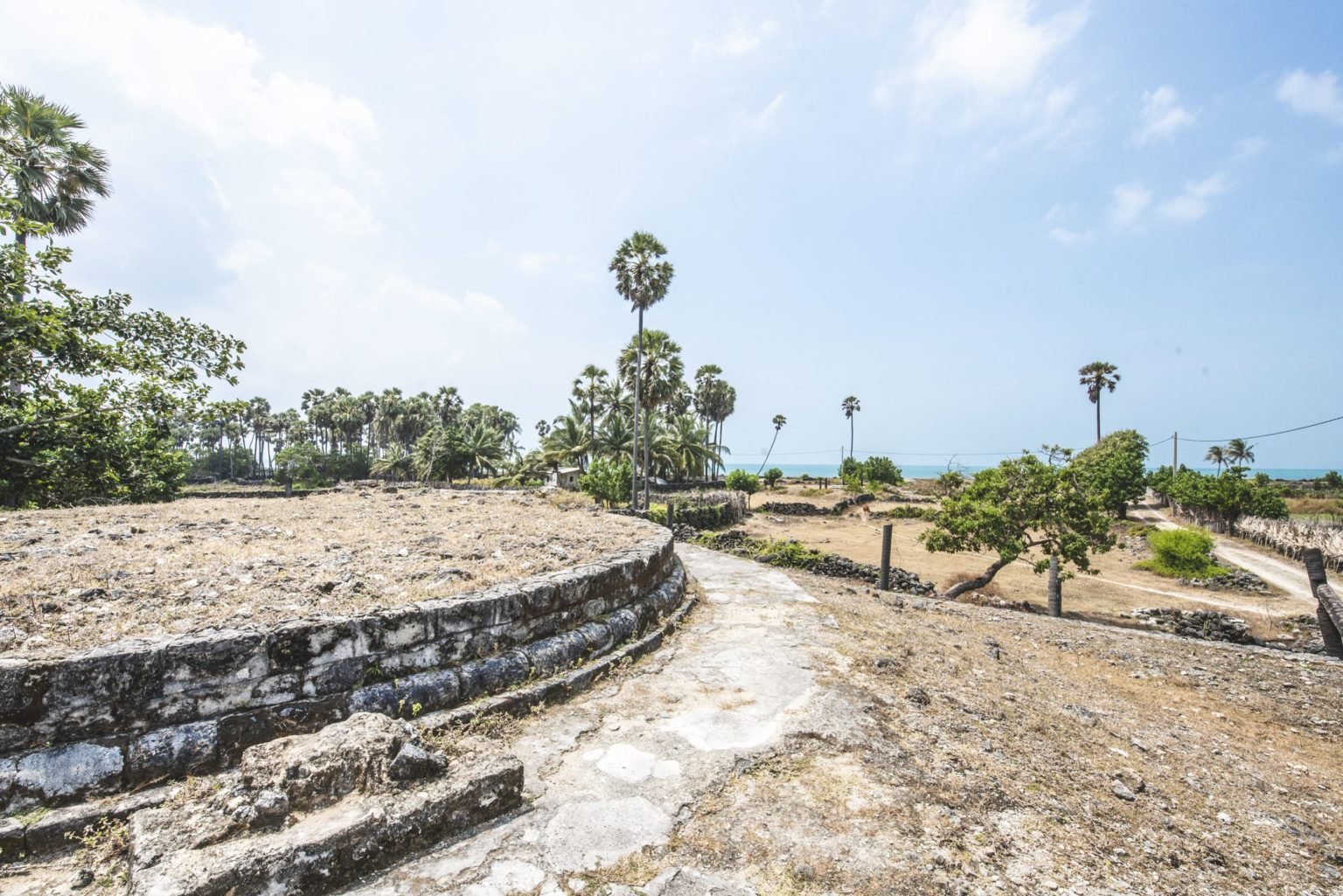Stupas of Delft Island – evidence of earliest human habitation – By Arundathie Abeysinghe
 Known as “Neduntivu” or “Nedunthivu” by residents in Jaffna, Delft Island is commonly referred as “Delft Island”, inherited from Dutch Colonials during their rule in Jaffna. Although, Delft Island is a vast island, it is mostly uninhabited.
Known as “Neduntivu” or “Nedunthivu” by residents in Jaffna, Delft Island is commonly referred as “Delft Island”, inherited from Dutch Colonials during their rule in Jaffna. Although, Delft Island is a vast island, it is mostly uninhabited.
At the northwestern coast of Delft Island, there are ruins of three ancient Buddhist stupas (dagobas) known as “Cholan ruins.” Two stupas are of medium or small size, yet the largest stupa has a circumference of 32 meters. Their ground walls are restored by the Department of Archaeology. Buddhist ruins on the Island were first reported in 1832, by a person utilizing the pseudonym “Pen” (PENN) to “Colombo Journal” newspaper.
Around the main stupa, there are remains of four smaller stupas. All these are bell shaped. There had been two stupas on the sides of the steps towards the square platform in the east and west directions and one stupa each in north and south directions.
- Lewis, in an article published in 1909, has mentioned that when Penn described about the stupa ruins, they would have been badly damaged.
In 1960’s, former Commissioner of Archaeology Charles Godakumbura carried out some conservations on the bases of these stupas. According to Ponnambalam Ragupathi, (in a publication on the archaeological heritage of Jaffna, in 1987), it can be assumed that this island has been inhabited since the 1st century, based on pieces of pottery discovered at the location.
As the Temple is located on the sea trade route from India to Jaffna, during ancient times, the Temple may have served as a place of worship for traders traveling on this route.
During the colonial period, too, Delft Island was of strategic significance. During the Dutch Colonial Era, they had named the Island as “Delft Island”, whereas, during the Portuguese Colonial Era, the Island had been known as “Ilha das Vascas” (meaning the island of cows), thereafter as “Ilha das Cavallos” (meaning Island of Horses) as the Island had been utilized as a ground for rearing cattle and horses. The Portuguese have constructed a fort on the beach, more suitable as a harbor and it had served as their local naval base. At present too, the Island is well-known for its herds of feral horses (also known as wild horses) that roam its coastal plains, descendants of Arabian stallions that had been bred in the Island for horse trade with India.
Delft Island is predominantly inhabited by approximately 5,000 people, Christians and Hindu Tamils who engage in fishing, producing dried fish, rearing cattle, poultry and engaged in cottage industries based on Palmyra Tree (Borassus flabellifer) products.
Situated at an equal distance between Sri Lanka and India, Delft Island can only be reached via a daily ferry that leaves Kurikkaduwan Jetty, located in close proximity to Jaffna. Sri Lanka Navy also operates one round-trip service a day, leaving to Delft Island at 9.00 a.m. and returning to Kurikkaduwan Pier at 2:30 p.m. Although, these ferries can accommodate a maximum of 100 passengers, preference is given to Delft residents. The ferry service is monitored by Sri Lanka Navy and is operated at an affordable rate. There is also a free ferry service operated by the Road Development Authority (RDA) of Sri Lanka.
At present, Delft Island is a popular tourist attraction visited by large numbers of Dutch travelers.
Tips for traveling to Delft Island:
Take note of the timetables of the ferry service as it is the only mode of traveling to and from Delft Island.
As the weather in the Island is hot and humid, it is necessary to carry bottles of water during the journey.
It is advisable to wear a cap, use sun protection cream as well as use mosquito/insect repellent when visiting the Island.
Baobab Tree – iconic landmark in Mannar – By Arundathie Abeysinghe – January 31, 2021
https://www.elanka.com.au/baobab-tree-iconic-landmark-in-mannar-by-arundathie-abeysinghe/
Pigeons Nest – protected monument in Delft Island – By Arundathie Abeysinghe – April 23, 2022
https://www.elanka.com.au/pigeons-nest-protected-monument-in-delft-island-by-arundathie-abeysinghe/
Queen’s Tower – alluring colonial legacy in Delft Island – By Arundathie Abeysinghe – November 17, 2021









